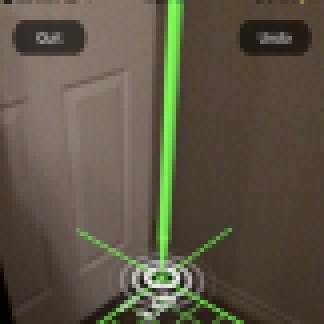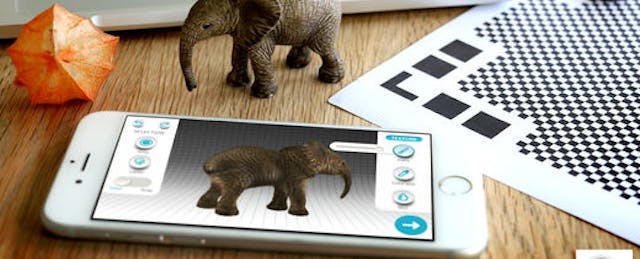The recent popularity of augmented reality (AR) and virtual reality (VR) has put a spotlight on immersive technology—and our curriculum may never look the same again.
In the midst of all this enthusiasm, Apple has released a new resource for app developers—the ARKit—that has supercharged augmented reality for fields like entertainment, gaming, advertising and, of course, education.
The ARKit is often mistaken as a single app, but it’s actually a tool for developers to create their own apps. Already, it has opened up the AR floodgates for newer Apple devices, and developers have been showcasing their new apps on social media using the hashtag #ARKit. The latest apps include technology that simulate realistic experiences, making AR more useful than ever in our daily lives.
While researching the possibilities, I’ve reached out to companies to see how they plan to make the technology that will one day rock our classrooms. In some instances, the app isn’t intended solely for education, and I try to make recommendations to prevent inappropriate content from being included. By and large, I’ve found companies welcome feedback and ideas to make their programs more beneficial and successful for classroom use.
While testing some apps before the release of iOS 11, I was overwhelmed with the educational potential and benefit for our students contained in this technology. I found some incredible apps that blew the roof off of our classroom walls, as well as some that provided minimal benefit.
Here, I’ve made my list of top 10 recommended ARKit apps (as of today) that can drastically transform our lessons and the interactions with content. While I’ve tried to explain the value of these tools, there are some instances where you simply need to see it to believe it, so I’ve included my experience on video using some of the apps to provide further insights whenever possible.
#10 Magicplan (freemium) – Measure with AR
Capture the floor plan of your room or building by dropping pins in the corners of your space and rotating around. The app collects the dimensions and provides both the area and a blueprint model. Students can create their own custom classroom with furniture, doors and walls. Easily explain the difference between area, volume and surface area using this app to solidify the learning.

#9 Chalk (Free) – Get video support using AR
Interact with friends or colleagues using augmented reality. Video chats will never look the same as you support and collaborate on your screen that attaches to your space. Draw on the screen and include shapes to show off your model volcano or tutor a friend on their math work from afar in the video chat.
#8 Kouji / Storyfab (Free) – Make your own 3D character
Take your bitmoji to the next level by making them 3D. Use 3D characters that express your thoughts and ideas using expressions and animation. The Storyfab app allows you to create a scene in augmented reality to give multiple camera views. Bringing these characters in your spaces feels more convincing than a standard image and gives the students a chance to show their learning in a creative way.
#7 JigSpace (Free) – Explore learning in 3D
Learn in 3D using JigSpace with interactive objects for engaging lessons. Jump into history, science and more by exploring objects on your classroom tables. Students can virtually break apart the objects and identify specific parts or learn how each item functions. There are other libraries of 3D objects available, but JigSpace has made those objects more realistic using ARKit.
#6 Qlone (Freemium) – Scan 3D objects and share
Scan an object on a QR code mat using your device to create a 3D object. The app uses a simple process that rotates around an object in a circular motion, which uploads in the app in multiple formats for 3D printing, creating GIFs or even uploading into other AR/VR apps. Students don’t need to create 3D objects for their projects from scratch, but instead can start with what they have.
#5 World Brush (Free) – Draw in 3D
Practice your artistic ability inside of your room by walking around and drawing in 3D using the World Brush app. When you hold the screen on the device and walk around, you’re leaving a trail of digital paint. The app has several different brush settings that include basic colors, calligraphy, glowing ink and rainbow. The published drawings can be tracked by location and the most popular creations show up in the letter board shown as a trophy.
#4 Catchy Words (Free) – Challenge your problem-solving skills with letters
Catch flying letters that can be grabbed with your device and placed into boxes to form a word. The letters can create multiple letter words that challenge you to form words in 360 degrees. While the traditional Scrabble game places letters in a single row, moving and rotating around your room makes creating words much more difficult. Asking students to get up and move around to solve the problems is not just fun and challenging, but helps with long-term retention.
#3 Orb (Free) – Use AR to build in your real world
Build a digital world in your living room. Drop spheres, columns, blocks and characters into your space and walk around them. Each of the 3D objects are tethered to a specific location based on where you place them and can be adjusted by texture and color. In addition to creating 3D objects in your space, you can save the creation and upload it in an entirely new space. The opportunity to create augmented reality for our students has taken a huge leap forward, and the Orb app is the beginning of more creation tools.
#2 Human Anatomy Atlas ($1) – Turn your classroom into a human anatomy lab
Developer Visible Body has created the most immersive AR experience I’ve ever seen by letting you view the human body within your space and allowing you to literally cut through any part using your device. Before trying this app out with students, keep in mind that the app includes the full anatomy of a body and may not be completely appropriate for all ages.
#1 FigmentAR (Free) – Build portals to anywhere in your classroom
Using both augmented and virtual reality, Figment has struck gold for our classrooms. Using different windows, our educators and students can create a portal into a 360-degree image while walking around in our space. The five portals available are good experiences, but what makes this app my No. 1 pick is the option to upload your own 360-degree image to bring your students to life inside your AR images. My recommendation for Figment is to provide a subscription-based app that gives the users access to a collection of 360-degree images.
I’m sure you’re feeling excited to begin using these tools and make sure to stay connected for more ARKit apps as they are released in the App Store. We’re beginning to see this technology in the classroom and Google is making the same type of technology available soon to open the door for more AR in our classrooms.


